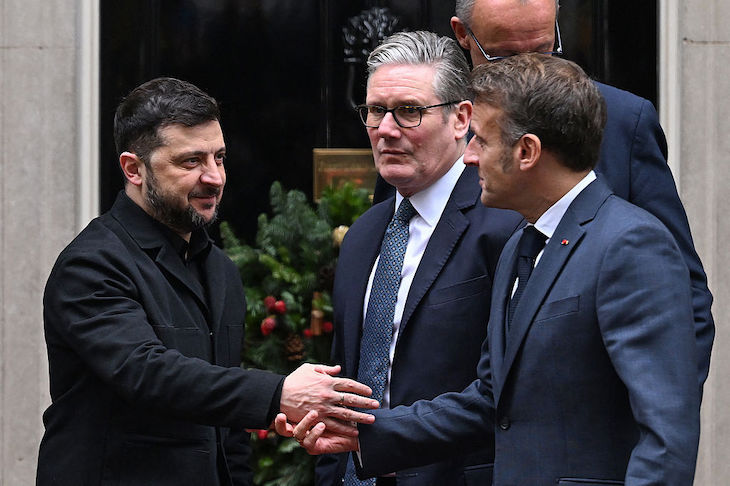When Donald Trump ordered the declassification of thousands of secret government documents on the assassination of president John F Kennedy, it looked like it would be a red letter day for America’s conspiracy theorists. The reality has been rather different. The JFK files – as well as other documents about the killings of Bobby Kennedy and Martin Luther King, which were released on Tuesday – look like a very damp squib.
These documents lead to more questions than answers
Around 2,000 documents were included in the release from the US National Archives and Records Administration. But despite Trump’s insistence that the files should not be redacted, many still have passages blacked out. Others are so faded or imperfectly photocopied as to be illegible.
The files contain memos from the CIA that describe how a KGB official had reviewed volumes of files on JFK’s killer, Lee Harvey Oswald, and were ‘confident’ that he was not an intelligence asset. Another document claims that Oswald communicated with a KGB officer in the months before the assassination. But those hoping for a silver bullet in the files will be disappointed: these documents lead to more questions than answers.
As a result, this batch of redacted documents will probably add to accusations of a deep state conspiracy rather than solve mysteries still surrounding the Kennedy and King killings more than 60 years later. Over the decades, polls show that many Americans believe that the trio of men arrested for the Kennedy and King assassinations did not act alone and that the state was somehow implicated in the crimes.
You don’t have to be a conspiracy theorist to feel that there was indeed something fishy about the killing of the young and charismatic president Kennedy when he was gunned down in Dallas, Texas, by a sniper (or snipers) in November 1963. Oswald, a former US Marine marksman, was arrested for killing the president after he had shot dead a Dallas cop, officer JD Tippett, within hours of the assassination. Oswald was then himself shot dead on live TV while in police custody by Jack Ruby, a Dallas nightclub owner with links to organised crime.
Oswald had previously defected to Russia at the height of the Cold War, had a Russian wife, and was apparently a pro-communist activist defending Fidel Castro’s Cuba – a regime that Kennedy had tried, and failed, to overturn.
Before his murder, Oswald claimed that he was a ‘patsy’ set up by the dark actors who had killed Kennedy. There were credible reports of other gunmen being seen around the famous ‘grassy knoll’ in Dallas’s Deeley Plaza, where Kennedy was hit. The number and trajectory of the shots that struck him was an important part of the mushrooming conspiracy theories.
To put such theories to rest, Kennedy’s successor, president LB Johnson (who had been present in Dallas and was himself accused by the wilder theorists of being behind the killing) set up a commission under Chief Justice Earl Warren to investigate and produce a definitive report on the assassination.
But the Warren report, published in unseemly haste, was riddled with inaccuracies. It merely served to fuel the theories of those who doubted its conclusion that Oswald was the sole gunman.
Apart from Russia and Cuba, those most often accused of being behind the killing are the Mafia, angry at the war against organised crime being waged by the Kennedy brothers. Others point fingers at the CIA, who allegedly blamed the Kennedys for the fiasco of the Bay of Pigs invasion of Cuba, and for being ‘soft on communism’.
When it emerged that Oswald had contact with government officials and shady characters linked with the Mob and CIA during a visit to Mexico shortly before the assassination, theories about a deep state plot thickened. But America’s trauma was only just beginning. In 1968, came the double whammy of Dr King’s killing (like Kennedy, King was shot by a sniper, in his case on a motel balcony in Memphis, Tennessee) and the fatal shooting of JFK’s brother, Senator Bobby Kennedy (in a Los Angeles hotel after he had won the California primary).
King’s killer, a white supremacist called James Earl Ray, fled to Britain and was arrested at Heathrow airport as riots swept the US in protest at his crime. Ray died in jail in 1998 while serving a 99-year sentence. Sirhan Sirhan, the Palestinian man who shot Bobby Kennedy at point-blank range with a pistol, allegedly because of the senator’s support for Israel, is still in jail, where he has been visited by Trump’s Health Secretary Robert F. Kennedy Jr.
No new shock revelations have yet emerged from the examination of the partially redacted documents released this week. Nonetheless, Trump has, at least, kept his promise to release the JFK files. With an estimated 80,000 documents still to wade through, in an age when few believe anything that governments say, the conspiracy theorists will be kept busy for some time yet.







Comments